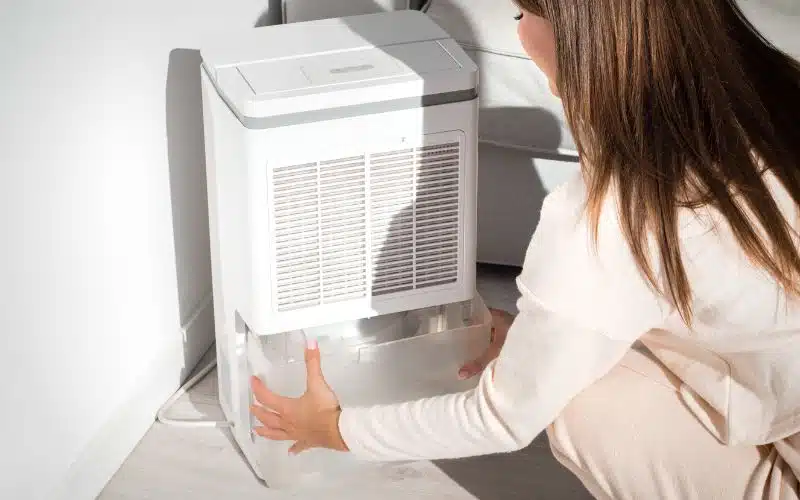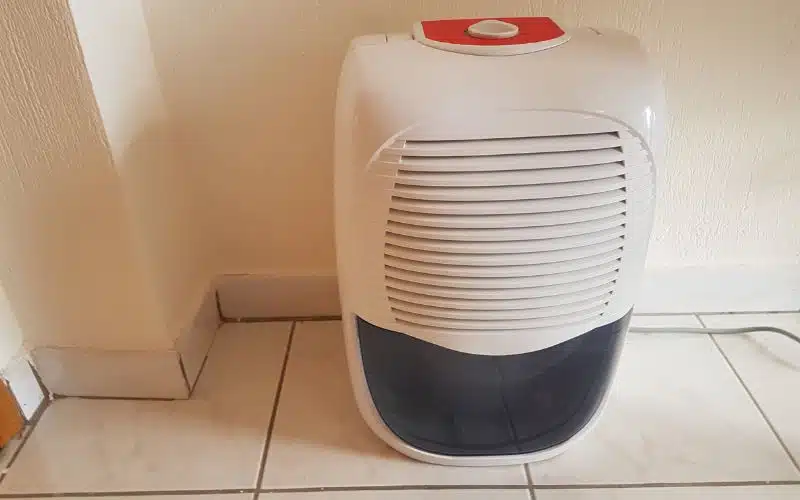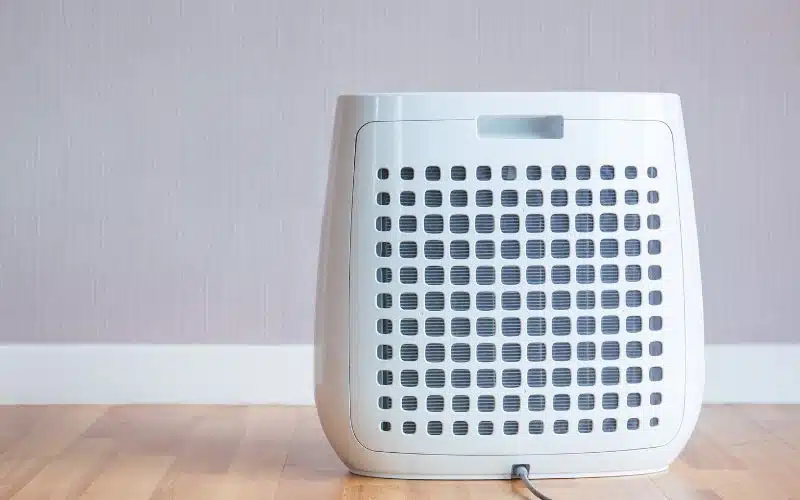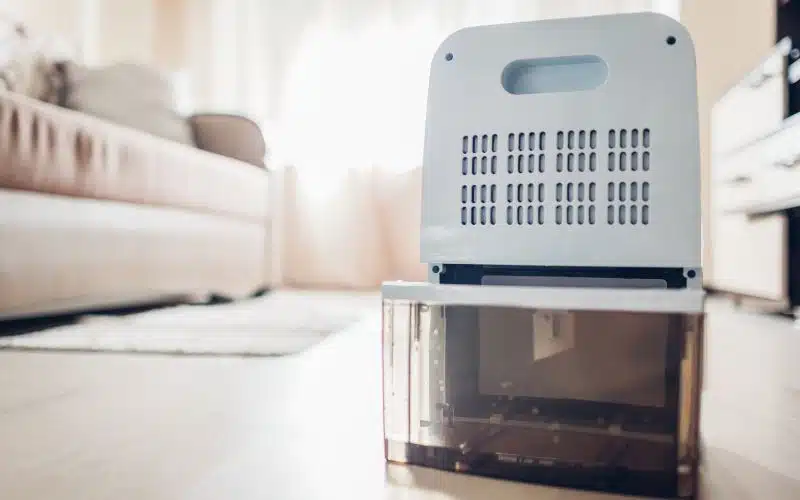It’s essential to keep your house at optimal humidity levels throughout the year, especially during the summer and winter, when air conditioning and heating systems can significantly run up your electricity bill.
One of the best ways to do this is by using whole-house dehumidifiers installed in the basement or utility closet and providing fresh, cool, or hot air directly to your home’s ductwork.
A whole-house dehumidifier is excellent for keeping the air inside your home free of excess moisture and high humidity levels.
Still, not everyone has the space or funds to install ducts in their homes to allow the dehumidifier to work correctly.
This article will guide you on whether or not you can have a whole-house dehumidifier without ducts and if it will be effective.
Installing a whole-house dehumidifier without ducts won’t be effective as it will return the humidity into the house. It won’t work because the air sucked into the ductwork goes via the dehumidifier, air conditioner, and back to your home. So, it releases high humidity levels back into your home.
Why Can’t We Use a Whole House Dehumidifier Without Ducts?
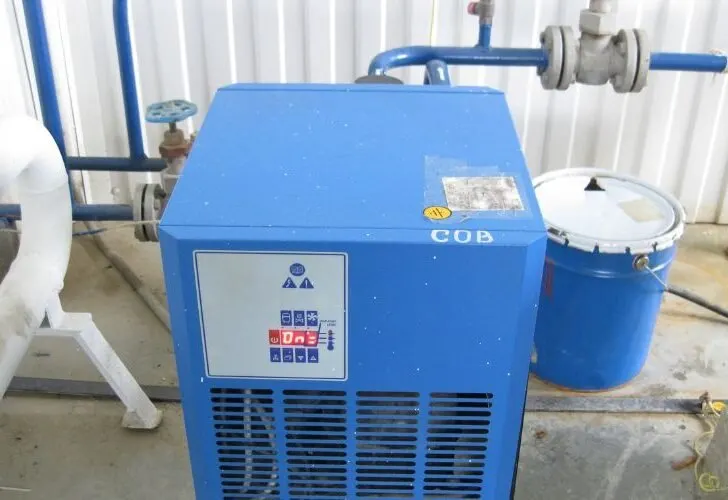
Without ducts, a whole-house dehumidifier will not be effective. That is because you need to link the dehumidifier to the HVAC system in your home.
The air sucked into ducts is recirculated via the dehumidifier and air conditioner. You put a whole-house dehumidifier in the cooling system’s return duct.
When humid air warms in the HVAC system, it goes through the whole house dehumidifier, and the evaporator coil dehumidifies it. As it condenses, the humidity decreases.
The reservoir’s condensation drains away. The air conditioner cools the dehumidified air before recirculating it, so a duct is needed.
A whole-house dehumidifier costs more to operate because it has to remove the humidity from the entire house, not just one room.
Additionally, you can’t vent a whole-house dehumidifier without ducts to the outside, so the moisture it removes is released back into the house.
It makes the indoor air more humid and causes problems for people with allergies or asthma.
How Does a Whole House Dehumidifier Work?
A whole-house dehumidifier draws in air from your home and passes it over a set of coils.
As the air passes over the coils, the coils remove moisture from the air. The dry air is sent back into your home through a duct system.
A whole-house dehumidifier’s primary function is to remove moisture from the air while simultaneously bringing the relative humidity level down.
After that, it filters the excess air and cools it, resulting in condensation from the humidity.
As condensation builds up, the dehumidifier drains the condensation using a water line drain or sump pump.
A whole-house dehumidifier is connected to your home’s HVAC system and helps to remove excess moisture from the air.
It can be beneficial if you live in an area with high humidity levels or have allergies and need help keeping the air in your home clean and dry.
While whole-house dehumidifiers are an excellent option for many homeowners, they require ductwork to function correctly.
To bring moisture control to your home, you’ll need to install a whole-house dehumidifier.
These appliances work the same way basement dehumidifiers do, but their manufacturers designed them for use throughout your home rather than just in your basement.
How Much Does It Cost to Have a Whole House Dehumidifier Installed?
The humidifier can range in price from $150 to $1,100, but the labor cost to install a whole-house humidifier can be anywhere from $100 to several thousand dollars, depending on the kind of humidifier you decide to install.
On average, installing a humidifier costs $750, varying from $400 to $2,500. Humidifiers can be flow-through, drum, steam, or spray-mist styles, and these are the four types offered.
Drum models are typically the least expensive, with flow-through systems falling in the middle and steam machines at the upper end of the price spectrum.
| Flow-through | Drum | Steam | Spray-mist |
|---|---|---|---|
| Flow-through units cost $100 to $500 and $100 to $450 to install. | Drum humidifiers cost $100 to $300. | Steam humidifiers cost $300 to $1,300, with $200 to $900 for installation. | These $100 to $150 units don’t require a pro, and you can install them yourself. |
| This system creates humidity using an evaporator pad. When a valve opens, water drains through a pad, wasting water. The heating cycle activates the valve. | They’re easy to install but are mold-prone and require much maintenance. Maintenance can add to the total cost of a central humidifier. You may obtain a $2,200 whole-home air purifier to keep your humidifier mold-free. | Electric probes heat water to create steam in these humidifiers. Steam humidifiers are more expensive and use 14 times as much energy than bypass humidifiers. Some steam humidifiers operate independently of the heating cycle. | It uses an existing HVAC unit. The HVAC system “sprays” moisture into the ducts, and driven air distributes it. They’re cheap but not used in homes or offices with low humidity needs. Spray-mist humidifiers won’t work with mineral-rich water. |
Humidifier Price Variables
When evaluating the cost of your humidifier, consider these additional elements.
#1. Humidity Meter (Hygrometer)
Some high-end models of humidity gauges cost up to $200, but most range between $10 and $70.
You want to make sure you’re not bringing in too much moisture, and one way to keep this from happening is to buy a hygrometer to tell you how much water is in the air.
However, that will make the cost of installing a humidifier a little higher, but it will keep you from having to fix any damage caused by moisture in the future.
#2. Humidistat (Hygrostat)
You use a humidistat to measure household humidity. It costs about $30 to $150, with the manual one being the least expensive, to the more expensive ones, the automatic or smart humidistat.
Humidistats are used to control the humidity level. It would help if you added a humidistat to humidifiers without one.
A hygrometer can monitor humidity levels at different distances from the humidifier and is more precise.
#3. Location
The location affects humidifier choice and installation complexity. There’s plenty of room in a basement for any size unit, and the ducts are easier to access.
Closets limit your possibilities. In an attic, your installation will need additional time and space.
#4. Evaporative Pads
The drum and the flow-through dehumidifier require an evaporative pad which costs about $70-$100. The pads heat up, evaporate, and distribute water through ducts.
#5. Annual humidifier maintenance
Humidifier repair costs $75 to $200. A pro should perform yearly maintenance; this extends equipment life and catches problems like mold.
Moisture in ducts can produce mildew and mold. HVAC technicians will recommend testing and removing mold if they discover it.
The mold tests cost $600, while regular duct cleaning will prevent mold growth. The cost of cleaning ducts is around $400.
Whole Home Dehumidification Options for Homes with Mini Splits?
There are several ways to achieve whole-home dehumidification without using ductwork. One option is to use a desiccant dehumidifier with your mini-split system.
This dehumidifier uses a material that absorbs moisture from the air, which can then be exhausted outside.
Another option is to install an inline dehumidifier, which will work with your mini split to remove moisture directly from the air before it enters your home.
Inline dehumidifiers are larger and more expensive than desiccant models, but they can also remove water from the air in more significant quantities.
Using an inline dehumidifier with your mini split doesn’t require ductwork or extra wiring.
You can also use your mini split’s cool or dry mode to dehumidify your home. Here’s what happens in both methods.
#1. Cool Mode
In the cool mode, warm air from your home moves across a refrigerant-filled coil in the mini split, and the cold refrigerant absorb the warm air’s heat, leading to the air temperature drop.
Air water condenses, and the water travels through the coil with less moisture. A condensate pump can drain the moisture.
#2. Dry Mode
When your home is warm and damp, choose the dry mode. In this mode, the ductless mini split system’s fans work slower, so air moves through the coil more slowly.
It absorbs more humidity from the air, which makes your home more comfortable. When your mini split is in dry mode, check the thermostat’s temperature as it drops occasionally.
Conclusion
Your whole-house dehumidifier without a duct will not be effective as you use it to reduce high humidity levels in your home.
So when installing it, consider that you have one before installing it or consider other means. You should connect your dehumidifier to your HVAC or have it return the humidity to your home.
